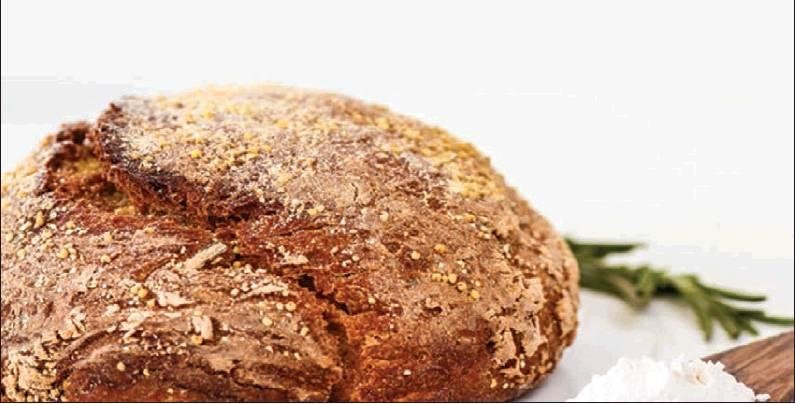The pain & pleasure of fresh baked bread
After my first-born, I had delusions of making bread with freshly ground flour.
My grandmothers were bread makers.
I was sure I had inherited their baking genes.
I secured a flour …
This item is available in full to subscribers.
Subscribe to continue reading. Already a subscriber? Sign in
Get 50% of all subscriptions for a limited time. Subscribe today.
Please log in to continueNeed an account?
|
The pain & pleasure of fresh baked bread
After my first-born, I had delusions of making bread with freshly ground flour.
My grandmothers were bread makers.
I was sure I had inherited their baking genes.
I secured a flour grinder, a 20-pound pail of wheat berries and a bread maker.
I couldn’t wait for the scent of fresh bread to fill the house.
After a few failed attempts, I hid the electric mill and gave away the wheat berries.
Grinding wheat, acorns, and corn to make bread has been around for thousands of years. Flour had to be finely ground to qualify as flour.
In ancient Rome, the white, finely ground powder was called “pollen,” and the best grade was called “flos.”
Flour was made with a small stone mill, a hand-quern, made with 2 round flat stones.
Every household had a hand-quern.
Wheat was poured in through a hole in the center. As the stones were turned, ground meal seeped out from the edge.
Native Americans and early settlers ground corn, wheat, and acorns with a stone mortar and pestle.
Larger community grinding mills were mule powered.
Water wheels were used to grind wheat and corn near rivers.
In the old days, whiter bread was exclusive to the wealthy. The finer and whiter the flour, the more milled and processed it was, which made the loaf more expensive.
Darker bread was made from coarser milled flour. It was less desirable and eaten by the lower classes.
Bread was initially cooked on flat hot rocks sitting in a fire.
Early stoves were comprised of 2 chambers, one for the wood and the other for the food. Rome had community stone ovens and public bakeries.
Dutch Fork German immigrants used earthen Dutch ovens of mud and brick in colonial days.
Native Americans used acorns to make bread. Honest-food.net has the intricate process of turning acorns into flour. Want to try acorn bread? You can actually purchase acorn flour online and follow the directions.
You can buy all types of flour to make everything from cakes to cookies to bread. The one thing they have in common is that they were all milled the same modern way.
In the old days, muscle power and rocks made flour. The result of both methods is the same, tasty, nutritious bread.
Sadly, my grand kids will probably never come to my house to enticing smells of freshly baked bread.
I’ll make up for that by keeping ice cream in the freezer! Maybe one day I will try to perfect my grandmother’s mixed bread, persimmon bread, or sweet potato bread, but don’t hold your breath.
To all the talented bakers, may your dough rise, may your yeast never go bad, and may you invite me over for a slice or 2.
Other items that may interest you







Comments
No comments on this item Please log in to comment by clicking here